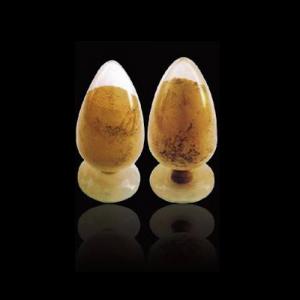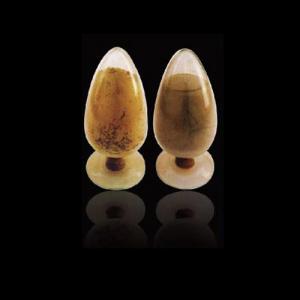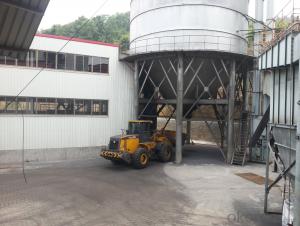Fireclay Based Mortar for Hot Blast Stove
- Loading Port:
- China Main Port
- Payment Terms:
- TT or L/C
- Min Order Qty:
- 2 m.t.
- Supply Capability:
- 5000 Tons Per Month m.t./month
OKorder Service Pledge
OKorder Financial Service
You Might Also Like
General Information of Fireclay Based Mortar for Hot Blast Stove
Made as per international standards, FIREF fireclay based mortar for hot blast stove is known for its low thermal conductivity, high refractoriness, and excellent thermal shock resistance.
Technical data of Fireclay Based Mortar for Hot Blast Stove
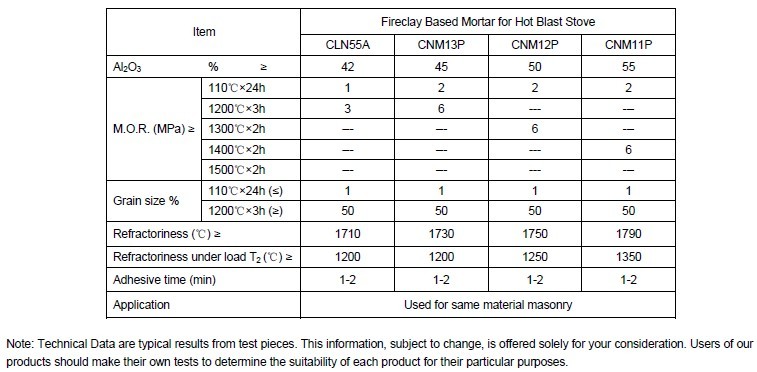
Production line and packing of Fireclay Based Mortar for Hot Blast Stove
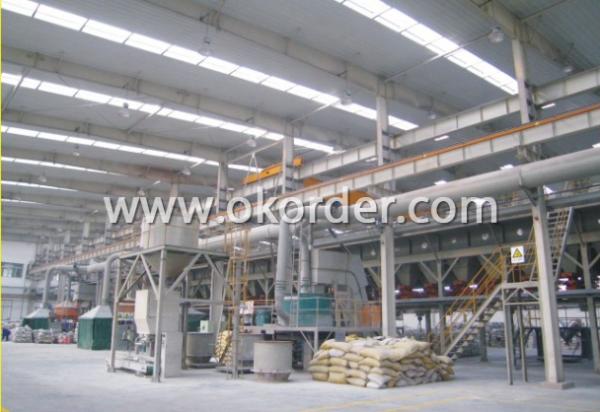

Feature of Fireclay Based Mortar for Hot Blast Stove
Low thermal conductivity
High refractoriness
Excellent thermal shock resistance
Excellent mechanical strength
Application of Fireclay Based Mortar for Hot Blast Stove
FIREF fireclay based mortar for hot blast stove can be used together with the same material fireclay bricks.
Production Flow of Fireclay Based Mortar for Hot Blast Stove
- Q:How are monolithic refractories applied in the hot face and cold face of furnace linings?
- Monolithic refractories are applied in the hot face and cold face of furnace linings through different methods. For the hot face, monolithic refractories are typically sprayed or troweled onto the surface, forming a dense and heat-resistant layer. This layer protects the furnace from high temperatures and thermal shocks. In contrast, for the cold face, monolithic refractories are usually cast or gunned into place, creating a more insulating layer. This layer helps to maintain a lower temperature on the outer surface of the furnace lining. Overall, the application of monolithic refractories in both the hot face and cold face ensures optimal performance and durability of furnace linings.
- Q:How do monolithic refractories resist chemical corrosion in iron and steel applications?
- Monolithic refractories resist chemical corrosion in iron and steel applications through their inherent properties and composition. They are designed to have high chemical stability and resistance to react with molten metals, slag, and other corrosive substances present in these applications. Additionally, monolithic refractories are usually formulated with specific additives and binders that enhance their resistance to chemical attack. This combination of properties and composition allows them to withstand the aggressive environment of iron and steel applications without significant degradation or corrosion.
- Q:How do monolithic refractories improve the efficiency of ladle and tundish lining systems?
- Monolithic refractories improve the efficiency of ladle and tundish lining systems by providing superior thermal insulation, excellent resistance to thermal shock, and higher mechanical strength compared to traditional brick or castable linings. This results in reduced heat loss, improved temperature control, and increased refractory life, ultimately leading to higher productivity and cost savings in steelmaking operations.
- Q:What are the factors influencing the choice of monolithic refractories for different furnace types?
- There are several factors that influence the choice of monolithic refractories for different furnace types. Firstly, the operating temperature of the furnace is a crucial factor as different monolithic refractories have different temperature resistance levels. Secondly, the type of material being processed in the furnace is important as certain materials may require specific refractories to withstand their corrosive or abrasive nature. Thirdly, the furnace design and its heating method also play a role in determining the suitable refractory material. Additionally, the thermal conductivity, thermal shock resistance, and mechanical strength of the refractory are considered to ensure optimal performance and durability. Finally, cost, availability, and installation requirements are factors that can influence the choice of monolithic refractories for different furnace types.
- Q:How does the choice of monolithic refractory impact the overall cost of iron and steel production?
- The overall cost of iron and steel production can be greatly affected by the choice of monolithic refractory. Monolithic refractory, unlike traditional brick or tile refractories, refers to a type of refractory material that is installed continuously. One important factor that impacts the cost of iron and steel production is the lifespan of the refractory. Monolithic refractories generally have a longer lifespan compared to traditional brick or tile refractories. This means that they require less frequent maintenance and replacement, resulting in lower overall costs over time. Additionally, monolithic refractories have a higher resistance to thermal shock and mechanical stress, which further extends their lifespan and reduces the need for repairs and replacements. Another crucial consideration is the energy efficiency of the monolithic refractory. These refractories possess better insulation properties, leading to reduced heat loss during the iron and steel production process. This helps lower energy consumption and, consequently, the overall cost of production. The improved insulation also contributes to a more stable and controlled temperature profile within the furnace, resulting in better product quality and reduced scrap rates. Furthermore, monolithic refractories offer greater flexibility in terms of installation and repair. They can be easily applied to complex shapes and structures, allowing for more efficient use of refractory materials. This reduces waste and lowers material costs. The ease of installation also saves time and labor, further contributing to cost savings. Additionally, monolithic refractories are known for their superior performance in high-temperature environments. They exhibit excellent thermal conductivity and resistance to chemical attacks, ensuring optimal furnace operation and reducing the likelihood of downtime and production delays. This, in turn, minimizes the impact of unexpected maintenance, repairs, and shutdowns on the overall cost of iron and steel production. In conclusion, the choice of monolithic refractory has a significant impact on the overall cost of iron and steel production. Its longer lifespan, improved energy efficiency, ease of installation and repair, and superior performance in high-temperature environments all contribute to cost savings in various aspects of the production process. Thus, careful consideration of the type of monolithic refractory used can result in significant cost reductions and improved overall efficiency in iron and steel production.
- Q:How do monolithic refractories improve the efficiency of ladle and tundish preheating furnaces?
- Monolithic refractories improve the efficiency of ladle and tundish preheating furnaces by providing superior insulation and heat retention properties. These refractories are designed to withstand high temperatures and reduce heat loss, ensuring that the furnaces reach and maintain the desired preheating temperatures more efficiently. Additionally, monolithic refractories offer excellent thermal shock resistance, preventing cracks and damage that can negatively impact furnace performance. Overall, the use of monolithic refractories in ladle and tundish preheating furnaces helps to optimize energy consumption and enhance the overall efficiency of the preheating process.
- Q:Can monolithic refractories be used for the lining of continuous casting tundishes and molds?
- Yes, monolithic refractories can be used for the lining of continuous casting tundishes and molds. Monolithic refractories are a type of refractory material that is composed of a single, homogeneous structure, in contrast to traditional refractories that are made up of multiple bricks or tiles. Monolithic refractories offer several advantages for lining tundishes and molds in continuous casting processes. Firstly, their monolithic nature allows for easy installation and repair, as they can be cast or gunned into place, eliminating the need for complex brickwork. This results in reduced downtime and increased productivity. Additionally, monolithic refractories have excellent thermal shock resistance, which is crucial for tundishes and molds that experience rapid and extreme temperature changes during the casting process. Their high thermal conductivity also ensures efficient heat transfer, promoting uniform cooling and solidification of the cast metal. Moreover, monolithic refractories offer good resistance to chemical attack, ensuring long-lasting performance even in the presence of molten metal and slag. They also have low porosity, preventing the penetration of metal and preventing the formation of cracks and spalling. Overall, monolithic refractories are a viable and effective choice for lining continuous casting tundishes and molds, providing superior performance, ease of installation, and durability in the demanding conditions of the casting process.
- Q:What are some common maintenance practices for monolithic refractories in iron and steel furnaces?
- Some common maintenance practices for monolithic refractories in iron and steel furnaces include: 1. Regular inspections: Conducting routine inspections is essential to identify any potential issues with the monolithic refractories. Inspections should be carried out by trained professionals who can assess the condition of the refractories and detect any signs of wear, erosion, or damage. 2. Repair and patching: Promptly repairing any damaged or eroded areas is crucial to prevent further deterioration and maintain the integrity of the refractories. Patching materials, such as refractory mortars or castable refractories, can be used to fill in gaps or repair small cracks. 3. Cleaning: Regularly cleaning the refractory lining helps to remove any build-up of slag, scale, or other impurities that can negatively impact the performance of the refractories. Cleaning can be done mechanically, using brushes or scrapers, or through chemical methods such as acid cleaning. 4. Thermal cycling: Controlled thermal cycling is often performed to condition and strengthen the monolithic refractories. This involves gradually increasing and decreasing the temperature of the furnace to improve the refractory's resistance to thermal shock. 5. Coating and sealing: Applying protective coatings or sealants to the refractory lining can help enhance its resistance to chemical attack, erosion, and thermal cycling. These coatings act as a barrier, preventing the penetration of molten metals or slags into the refractory material. 6. Monitoring and control: Continuous monitoring of operating conditions such as temperature, pressure, and atmosphere inside the furnace is important to prevent any sudden changes that may negatively affect the refractories. Maintaining proper control over these parameters helps to extend the life of the monolithic refractories. 7. Training and education: Providing regular training and education to furnace operators and maintenance personnel is crucial for them to understand the importance of proper refractory maintenance practices. This ensures that the refractories are handled and operated correctly, reducing the risk of premature failure. Overall, implementing these maintenance practices can significantly prolong the lifespan of monolithic refractories in iron and steel furnaces and maximize their performance, ultimately leading to improved efficiency and cost-effectiveness in the production process.
- Q:How do monolithic refractories help in enhancing the durability of iron and steel furnaces?
- The durability of iron and steel furnaces is greatly improved by the use of monolithic refractories, which possess unique properties and characteristics. These materials are specifically designed to endure harsh conditions and extremely high temperatures, making them the ideal choice for lining furnaces. To begin with, monolithic refractories exhibit exceptional thermal resistance, enabling them to withstand extreme heat without compromising their structural integrity. With iron and steel furnaces operating at temperatures exceeding 2,000 degrees Celsius, traditional bricks or other materials would quickly succumb to such intense heat, necessitating frequent repairs and maintenance. Conversely, monolithic refractories are capable of enduring these extreme temperatures without deterioration, thereby enhancing the durability of the furnaces. Furthermore, monolithic refractories boast a high resistance to chemical attack. In the production of iron and steel, the materials being processed often contain impurities and aggressive chemicals that can react with the furnace lining, leading to corrosion and erosion over time. However, monolithic refractories possess a remarkable ability to resist chemical attack, ensuring that the lining remains intact and durable even in the presence of corrosive elements. In addition, monolithic refractories exhibit superior mechanical strength and abrasion resistance. The movement of raw materials, stirring of molten metal, and tapping of the furnace exert mechanical stress and cause abrasion on the lining. Consequently, the lining must withstand this constant wear and tear without cracking or breaking. Monolithic refractories possess exceptional mechanical strength and can resist abrasion, thereby guaranteeing the durability and functionality of the furnace for an extended period. Moreover, monolithic refractories offer outstanding thermal shock resistance. The lining of iron and steel furnaces experiences rapid temperature changes during various stages of production. These temperature fluctuations induce thermal stress and may result in cracks or spalling of the lining. However, monolithic refractories possess low thermal conductivity and can endure thermal shock, effectively preventing any damage to the furnace lining and enhancing its durability. In conclusion, monolithic refractories contribute significantly to the durability of iron and steel furnaces by providing excellent thermal resistance, high resistance to chemical attack, superior mechanical strength and abrasion resistance, as well as exceptional thermal shock resistance. These properties ensure the integrity of the furnace lining, enabling it to withstand extreme temperatures and resist the corrosive and abrasive nature of the materials being processed. Ultimately, this prolongs the lifespan of the furnace and reduces the necessity for frequent repairs or replacements.
- Q:How are monolithic refractories repaired or replaced in iron and steel facilities?
- Due to their superior thermal and mechanical properties, monolithic refractories are widely used in iron and steel facilities. These refractories are designed to withstand high temperatures, thermal shocks, and chemical attacks. However, over time, they may experience wear and tear, leading to the need for repair or replacement. The process of repairing or replacing monolithic refractories in iron and steel facilities typically involves the following steps: 1. Inspection: A comprehensive inspection is performed to identify areas that require repair or replacement. This inspection may include visual examination, thermal imaging, or other non-destructive testing techniques to assess the extent of damage. 2. Removal of damaged material: The damaged monolithic refractory material is carefully extracted using appropriate tools and equipment. This step ensures proper adhesion of the new refractory material to the substrate. 3. Surface preparation: The substrate or lining surface is prepared to improve the bonding between the new refractory material and the existing structure. This may involve cleaning, grinding, or shot blasting to remove loose particles, contaminants, and any remaining damaged material. 4. Selection of repair material: Depending on specific requirements and operating conditions, a suitable repair material is chosen. This may involve selecting a similar monolithic refractory material or a specialized repair product designed for the application. 5. Mixing and installation: The repair material is mixed according to the manufacturer's instructions, ensuring the right consistency and workability. It is then applied to the prepared surface using various techniques such as troweling, spraying, or casting. Attention is given to achieve the desired thickness and proper consolidation of the repair material. 6. Curing and drying: After installation, the repaired refractory material is allowed to cure and dry according to the manufacturer's recommendations. This step is crucial to achieve the desired strength and thermal properties of the refractory lining. 7. Quality control: Once the repair or replacement is complete, quality control measures are implemented to ensure the integrity and effectiveness of the repaired or refurbished refractory lining. This may involve conducting tests such as thermal conductivity measurements, density checks, or visual inspections. It is important to note that the process of repairing or replacing monolithic refractories may vary depending on the specific requirements and conditions of each iron and steel facility. Additionally, it is advisable to consult with refractory experts or manufacturers to ensure the correct selection of materials and proper execution of the repair or replacement procedure.
1. Manufacturer Overview |
|
|---|---|
| Location | Henan, China |
| Year Established | 2007 |
| Annual Output Value | Above US$ 60 Million |
| Main Markets | Mid East; Eastern Europe; North America |
| Company Certifications | ISO 9001:2008 |
2. Manufacturer Certificates |
|
|---|---|
| a) Certification Name | |
| Range | |
| Reference | |
| Validity Period | |
3. Manufacturer Capability |
|
|---|---|
| a)Trade Capacity | |
| Nearest Port | Tianjin |
| Export Percentage | 31% - 50% |
| No.of Employees in Trade Department | 21-50 People |
| Language Spoken: | English; Chinese |
| b)Factory Information | |
| Factory Size: | Above 36,000 square meters |
| No. of Production Lines | Above 5 |
| Contract Manufacturing | OEM Service Offered |
| Product Price Range | Average |
Send your message to us
Fireclay Based Mortar for Hot Blast Stove
- Loading Port:
- China Main Port
- Payment Terms:
- TT or L/C
- Min Order Qty:
- 2 m.t.
- Supply Capability:
- 5000 Tons Per Month m.t./month
OKorder Service Pledge
OKorder Financial Service
Similar products
New products
Hot products
Hot Searches
Related keywords
